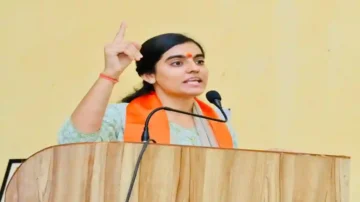Strategic Recommendations and Government Initiatives
Recognizing the urgency, the government and IAF are taking steps to narrow the gap:
Fast track Orders: A June–July 2025 review committee (chaired by the Defence Secretary) recommended expediting pending deals. Its report, submitted in March 2025, prompted approval of a ₹67,000 crore contract for 97 additional Tejas Mk1As. This will boost Tejas output to 180 jets by 2031. In parallel, the Defence Acquisition Council (Feb 2025) cleared proposals (₹84,560 crore) for six more mid air refuelers and AEW&C aircraft. These enablers improve sustained operations.
MRFA Push: The same committee green lit moving ahead with the 114-MRFA program. An RFP (likely in late 2025) is expected to invite bids under Make in India terms. Major players (Boeing, Dassault, Saab, etc.) are actively pitching their jets. Official sources indicate the MoD wants significant local content, possibly with HAL or Tata as production partner. If concluded, MRFA could inject much needed jets by the early 2030s.
Indigenous Focus: The Centre has signaled support for “Atmanirbhar” programs. In May 2025, the government issued a blueprint inviting public and private industry to participate in AMCA’s development and production. Government funding (₹10,000 Cr approved for Mk2) and streamlined processes (post empowerment panel) aim to accelerate HAL. Private firms are now co-producing Tejas components (Alpha Tocol, private fuselage shops). New facilities (third assembly line at Nashik) are planned for Tejas Mk1A and Mk2.
Budgetary Support: India’s defence budget is rising slightly year on year (4.7% uptick in 2024–25), but still below requirements. Policymakers face pressure to allocate more to capital (aircraft procurement) over revenue. Some analysts advocate increasing defense spend from 2.2% to 2.5–3% of GDP, to free up funds for jets and missiles.
Procurement Reforms: Recognizing bottlenecks, the MoD is revising policies. Recent reforms include delegating more powers to single stage, single-vendor proposals and pushing more projects on Fast Track Procedure (FTP). The “Make I” category and Innovations for Defense Excellence (iDEX) are meant to onboard private industry quickly. A Defence Export Strategy (2020) aims to turn India into an equipment exporter, partly by co-development (Tejas interest from Brazil, Indonesia, Malaysia).
Force Structure Review: The IAF’s leadership has repeatedly reaffirmed the 42 squadron goal. They stress numbers matter as much as technology. Future doctrine planning (Vision 2050) is said to consider optimal force mix, including more UCAVs and 5th/6th-gen jets. Exercises like Gaganshakti and Iron Fist are testing new command structures to maximize impact of limited jets.
Recommendations from analysts include: prioritize the top-up of squadrons at any cost (even more Rafales or F-16s if needed), broaden OEM competition (e.g. consider F-35 or Su-35 if available), and deepen pilot training to raise qualitative edge. Some also suggest buying used jets (like ex-Swiss F-18s or Israeli F-16s) to fill gaps. On the high tech front, investments in missiles (BVR, air to ground), drones (like the MQ-9 Reaper), and integrated networks can partly offset fewer manned fighters.
Ultimately, closing the fighter gap requires political will. The recent panel report and MoD approvals show the establishment recognizes the problem. But the needle must move faster. The window to prepare for China’s growing air power and Pakistan’s modernization is narrow. If by 2030 India’s fighters grow only modestly, the strategic landscape in South Asia will be far more dangerous. The government faces a clear choice: continue at the current pace and accept a thinner shield, or act decisively now to rebuild India’s air wings.
Sources: Authoritative defense studies, think tank analyses, and media reports have documented these trends and figures. Each citation corresponds to published data or expert commentary on India’s air power and its regional context.
Stay connected with The News Drill for more updates. Stay informed. Stay updated. Stay Ahead.
Contact us: contact@thenewsdrill.com
Submit tips or story: editor@thenewsdrill.com
FAQs: India’s Fighter Squadron Strength and Modernization Challenges
1. Why does India need 42 fighter squadrons?
India’s defense doctrine requires at least 42 fighter squadrons to maintain air superiority on both its western (Pakistan) and eastern (China) fronts. This number is essential for sustaining combat readiness during a two-front war scenario, a strategic concern that has grown more urgent given China’s expanding air force and Pakistan’s modernization efforts.
2. How many fighter squadrons does India currently have in 2025?
As of 2025, India has around 29 to 30 active fighter squadrons, which is far below the sanctioned requirement. This shortfall significantly impacts India’s ability to conduct simultaneous operations on two fronts.
3. How does India’s air power compare with China’s?
China has a vastly superior fleet with over 1,500 advanced fighter jets across 66+ squadrons, including stealth J-20s and 4.5-generation fighters. India, with only 30 squadrons, lags in both quantity and fifth generation technology.
4. Is India’s air force stronger than Pakistan’s?
Technologically, yes. India has superior platforms like Rafale and Sukhoi Su-30MKI. However, Pakistan’s 24–26 squadrons now rival India’s squadron count. With modern additions like JF-17 Block III, F-16s, and J-10CE, Pakistan is rapidly closing the capability gap.
5. What fighter jets is India retiring?
India is retiring aging platforms such as the MiG-21 Bison, SEPECAT Jaguar, MiG-27, and eventually the MiG-29 and Mirage-2000 by the early 2030s. These retirements are accelerating the squadron strength decline.
6. What indigenous aircraft are being developed by India?
India is focusing on three key indigenous programs:
Tejas Mk1A – Upgraded version of the LCA Tejas (83 ordered, 97 more planned)
Tejas Mk2 – A medium-weight fighter expected by 2030
AMCA – India’s first 5th-generation stealth fighter, under development with the first prototype targeted by 2032
7. What is the status of India’s MRFA (114 fighter jets) deal?
The MRFA (Multi-Role Fighter Aircraft) deal aims to procure 114 advanced jets via global tender with “Make in India” provisions. As of 2025, the final Request for Proposal (RFP) is still pending, delaying acquisitions from global OEMs like Dassault, Boeing, and Lockheed Martin.
8. Will India acquire any fifth generation fighter jets soon?
India has yet to induct any fifth generation fighters. The AMCA project is still in development. Meanwhile, India is exploring the possibility of acquiring 2–3 squadrons of 5th-gen aircraft from abroad, possibly as a stop gap measure.
9. How does India’s air force compare with smaller neighbors like Bangladesh or Sri Lanka?
India maintains overwhelming superiority over smaller neighbors:
Bangladesh: Operates 40 aging fighters like F-7s and MiG-29s
Myanmar: Fields ~30 aircraft, including Su-30SME and JF-17s
Sri Lanka: Has a few aging Kfirs and F-7s for basic air defense
10. What are the biggest threats if India fails to rebuild its squadron strength?
If India doesn’t accelerate modernization:
Numerical disadvantage in a two front war will persist
Air superiority in critical regions like Ladakh and Arunachal Pradesh could be lost
Attrition and maintenance burdens will rise
Deterrence against China and Pakistan will weaken













